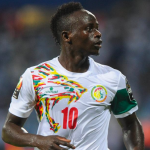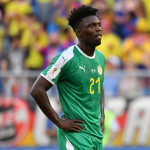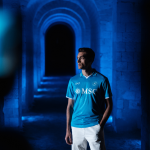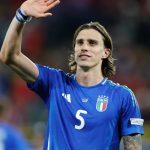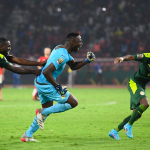
Senegal jersey's history
The aesthetics of the national team that finally won the African Cup of Nations
February 7th, 2022
Yesterday will be a day that will be impossible to forget for the fans of Senegal, who for the first time in their history managed to win the African Cup of Nations after countless bitter disappointments by defeating Egypt. A tense and heartfelt final for both teams on the field, which could have been unblocked when Abdelmonem gave the opponents a penalty kick, then failed by Manè, and ended on penalties after a scoreless extra time. A trophy wanted and sought, after having only touched it in 2019, in the final lost in the first minutes to Mahrez's Algeria.
Defining the aesthetics of the Senegal national team over the past 15 years has been PUMA, a dominance that began in 2006 and was only interrupted in 2017 by Romai, a brand born in the United Arab Emirates. The German brand has accompanied Senegal ever since the African nation abandoned Le Coq Sportif, which had made the first uniforms with which the Lions of Teranga revealed themselves to the world. Senegal is one of the selections that has always shown a lot of colors and originality in its uniforms, experimenting and proposing always different templates and designs with every brand, from PUMA to Le Coq Sportif.
The Le Coq Sportif origins
Twenty years on, the Senegal jerseys designed by Le Coq Sportif are still selling like hot cakes on the streets of Dakar. A success dictated not only by the glorious sporting generation, which in the 2002 World Cup in Korea and Japan appeared for the first time in the soccer that counts, imposing a style and enthusiasm that would become the main characteristics of the Senegalese national team. But also for the design proposed by the French brand, which unlike PUMA has designed very simple jerseys, focusing on the colors of the flag. The relationship between France and Senegal has deep and in many ways dramatic historical roots, dating back to the colonial period of transalpine history. At that time, even the technical commissioners were of French nationality, from Claude Le Roy to Bruno Metsu, confirming the strong influence that still persisted, also symbolized by the cockerel on the crest of the technical sponsor.
The PUMA Era
And the jerseys created by PUMA for this edition confirm what has been said, the German brand has designed two jerseys with graphics inspired by the historical places, art and history of the African country. As with the other selections, PUMA has played with the characteristic elements of each country, in this case bringing to the soccer fields a jersey that reflects all the identity of the Senegalese nation. Two jerseys destined to remain in history, which in some way helped break the taboo of the African Cup of Nations, becoming the undisputed protagonists of the historic triumph.
Characteristic elements that have always been present on Senegalese jerseys. In 2010, for example, PUMA chose to put the animal symbol of the respective nation on every jersey they created, and for Senegal's the choice obviously fell on the lion. Subsequently, for the 2018 World Cup in Russia, the national team presented itself with two jerseys of great impact on which there was the tribal mask of a lion. Two jerseys that risked never being produced, as the Senegal national team had returned to rely on PUMA just a few months before the start of the World Cup and having closed the parenthesis with Romai.
In the 2006 and 2012 editions, the lion was replaced by the Baobab, absolute protagonist of the Senegalese landscape and other symbol of the nation. Two very similar jerseys, with tone on tone graphics, but which did not bring much luck to the World Cup and the Africa Cup of Nations, where the Lions of Taranga recorded only defeats and failures.
The Romai experiment
The home kit worn in the 2017 edition is probably one of the most unique, with the return of the stylized lion. Romai designed a white background jersey with a green left sleeve, while on the right side stands out the stylized head of a lion ready to bite his rivals, symbolizing the hunger for soccer that is experienced in Senegal. A relationship that ended disastrously, however, without any official explanation and just a few months before the most important competition in the world, the World Cup. Another strange and inexplicable episode in the troubled relationship between African national teams and kit suppliers.









